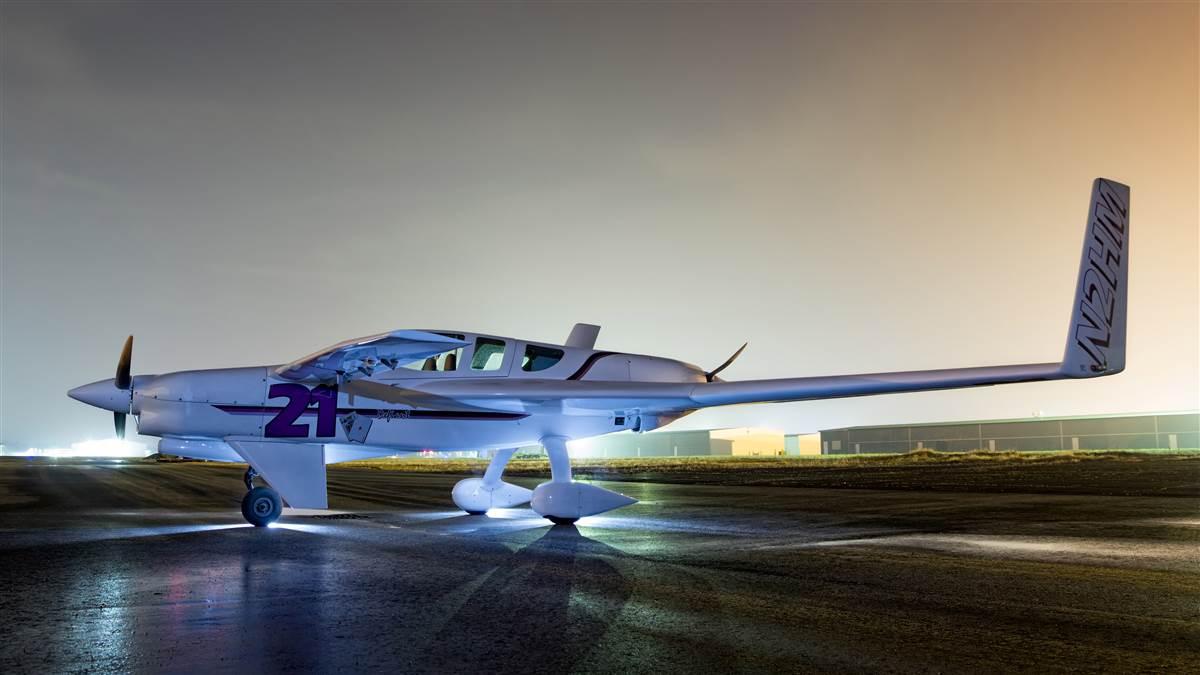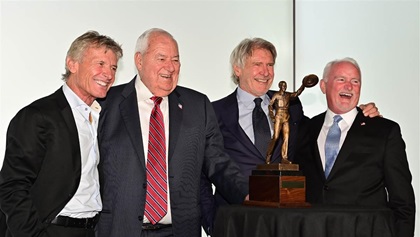Airplanes we love: Rutan Defiant
Build yourself one, but it could take awhile

Should one of the push-pull Titan O-320 piston engines quit, the engine-out procedure is unconventional for those trained on multiengine aircraft with wing-mounted engines: push the power levers all the way forward and pull the stick all the way back. The result is promised to be a steep climb until the 24-foot canard on the front stalls, at which time there will be a gentle recovery to level flight. “I’ve never done it,” said Harry Manvel of Clarkston, Michigan, near Pontiac. His Defiant is based at Pontiac, 30 miles from Detroit.
Manvel's 165-knot twin with its manually retracted Mooney nosewheel took 15 years to build. Some take 20. Two-time champion builder Fred Keller took three years to build the second prototype at Rutan’s request. No one has since duplicated his speed of construction. Once it was clear that large manufacturers would ignore Rutan’s design, Keller’s plans created during the construction were sold to builders as an alternative.
If you have looked closely at the photo and think there is no rudder, you are wrong. It’s down under the cabin beneath the pilot’s feet. It’s called a “rhino rudder” because in earlier Rutan designs it was on top of the nose, like the horn of a rhinoceros. Manvel said it took a couple of hours for him to get used to it. “When you’re trying to kick out of a crab when you’re landing, or whatever, you’re not moving the tail, you’re moving the nose.” An advantage is the lack of control cables running to the tail as found in conventional aircraft.
Another unusual feature is that each engine requires its own ignition key.
Manvel said it is fun to fly. “It’s the easiest airplane to land that I have ever flown. It just kind of lands itself,” Manvel said. You don’t stall the airplane onto the runway; you land with the nose slightly high. He has converted the aircraft to a glass cockpit over four instrument-panel revisions. Operating costs are hard to estimate since he does all his own maintenance, other than the fact that the two 167-horsepower engines burn a total of 15 gallons per hour. He carries 118 gallons of fuel and can still haul a 600-pound payload.
PRICE: $85,000. None were found for sale, although a partially completed Defiant was available as a project. The price was listed as, “Make offer.”
HOW MANY IN THE FLEET? Probably 20. FAA data lists 40 but incorrectly identifies some as single-engine, and may list some that are out of service or parted out.
BIGGEST PLUS: Safety of centerline thrust and canard design. Simple engine-out procedure. Stall resistant.
BIGGEST MINUS: There are two of everything, meaning two oil changes, two engine overhauls, and more.
For more information canardzone.groups.io/g/defiants
Alton Marsh is a former senior editor at AOPA Pilot who is now a freelance writer specializing in aviation.




